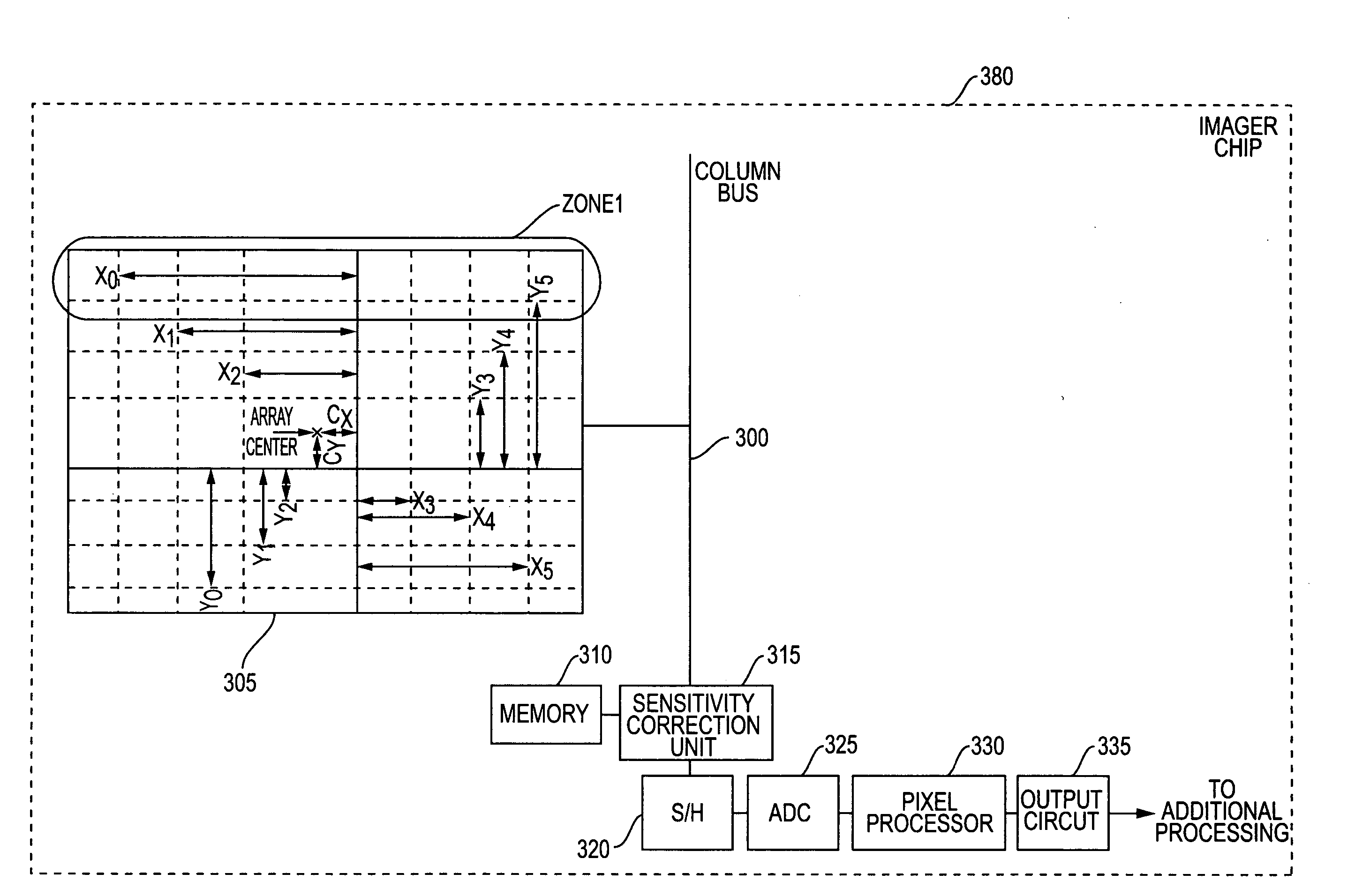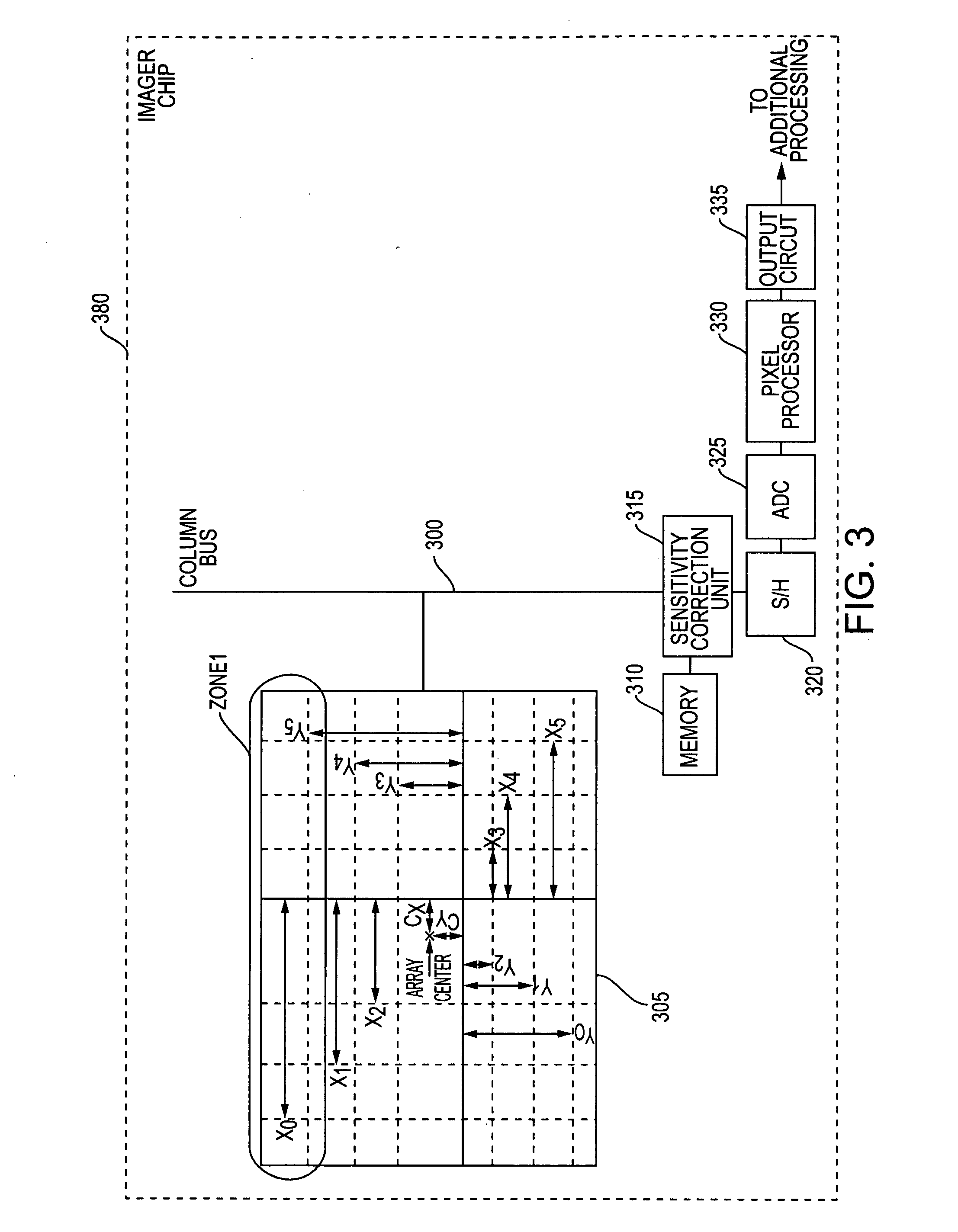Correction of non-uniform sensitivity in an image array
a technology of image array and sensitivity, applied in the field of complementary metal oxide semiconductor (cmos) imager, can solve the problems of sensitivity variation over the array, unsatisfactory parts, adversely affecting the image produced by the aps,
- Summary
- Abstract
- Description
- Claims
- Application Information
AI Technical Summary
Problems solved by technology
Method used
Image
Examples
Embodiment Construction
[0021] In the following detailed description, reference is made to the accompanying drawings which form a part hereof, and in which is shown by way of illustration specific embodiments in which the invention may be practiced. These embodiments are described in sufficient detail to enable those of ordinary skill in the art to make and use the invention, and it is to be understood that structural, logical or procedural changes may be made to the specific embodiments disclosed without departing from the spirit and scope of the present invention.
[0022]FIG. 2 depicts an APS array divided into several zones, in accordance with an exemplary embodiment of the invention. The zones depicted in FIG. 2 represent the optimum geographic location of the zones when the APS array is used in conjunction with a certain type of lens. The boundaries of the zones are programmable and may be modified to another configuration so that the APS array may be used with another type of lens. As depicted, the ar...
PUM
 Login to View More
Login to View More Abstract
Description
Claims
Application Information
 Login to View More
Login to View More - R&D
- Intellectual Property
- Life Sciences
- Materials
- Tech Scout
- Unparalleled Data Quality
- Higher Quality Content
- 60% Fewer Hallucinations
Browse by: Latest US Patents, China's latest patents, Technical Efficacy Thesaurus, Application Domain, Technology Topic, Popular Technical Reports.
© 2025 PatSnap. All rights reserved.Legal|Privacy policy|Modern Slavery Act Transparency Statement|Sitemap|About US| Contact US: help@patsnap.com



